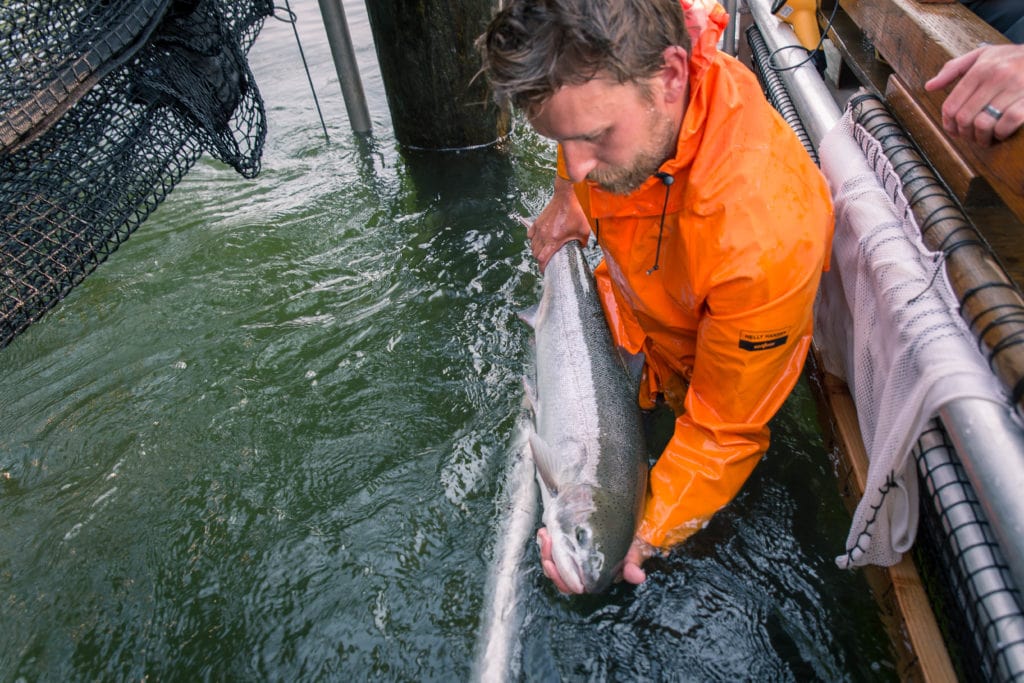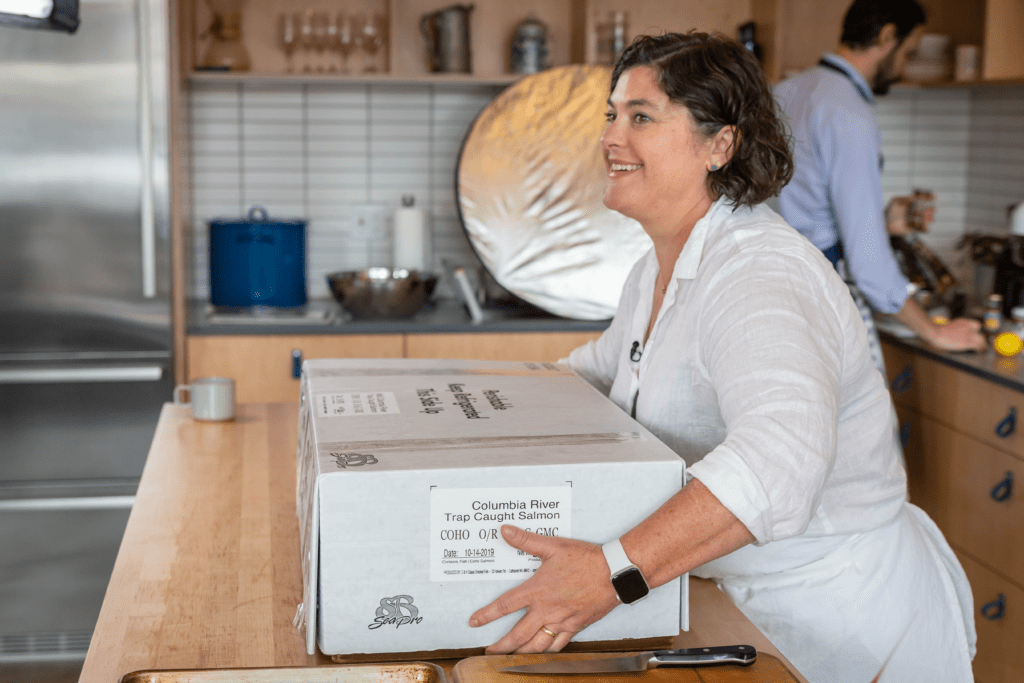Wild Fish Conservancy’s (WFC) field research team is back on the lower Columbia River near Cathlamet, Washington to advance research of a modified commercial fish trap, marking half a decade of research into this wild salmon and orca safe fishing method. With minor alterations to the design of this year’s fishing device, WFC will test for improvements in bycatch survival and efficiency. Learn more about the groundbreaking new design implemented in 2019.
This effort will inform the Washington Department of Fish and Wildlife’s (WDFW) emerging fishery process to potentially legalize the fishing gear at a broader-scale for selective harvest of hatchery salmon and reduction of commercial bycatch mortality of threatened and endangered salmon. By addressing genetic, ecological, and fishery bycatch impacts that are associated with hatchery production, WFC will help resolve primary limiting factors to wild salmonid recovery and identify a sustainable path forward for commercial fishers and their communities throughout the Columbia River Basin. At the same time, the successful implementation of this alternative fishing method on the Columbia will act as a working model for communities throughout the northwest.

Beginning in mid-August, WFC and local Cathlamet commercial fishing and processing partners began preparing for the season. Fine meshed nets were attached to the trap’s untreated wood pilings that serve as anchors to hold the gear in place against the river’s strong currents. With all hardware and nets attached from the high-water mark to the river bottom, the finished trap will once again function to passively corral returning adult salmonids migrating against the current into the trap’s heart, spiller, and live well compartments (each of which is progressively smaller and more accessible than the last to enable sorting of the catch).
Within a fish trap, all captured fish remain free-swimming and can be sorted in the submerged live well compartment by fishers or biologists with little to no air exposure, handling, net contact, entanglement, and overcrowding. It is this low-impact, passive capture process that separates the fish trap from other methods of salmon capture and gives operators of the gear a means to successfully release threatened and endangered wild bycatch unharmed to resume the upriver migration to protected or restored spawning habitats.

Conventional fishing gears such as gill nets that are commonly employed in the Columbia River, and elsewhere throughout the Pacific Northwest, function to entangle migrating fishes by the gills. Although the gill net is an effective means of capture, it is undoubtedly a very poor means to keep threatened and endangered bycatch undamaged and alive for safe release upriver. This conventional capture process is problematic for wild salmonid recovery and mixed-stock commercial fishery operations that are constrained by impacts to species listed under the U.S. Endangered Species Act.
This year’s Columbia River fish trap project and research will build upon objectives of 2019 by expanding a coho salmon bycatch survival study and continuing a commercial harvest and marketing project to ensure fishers be rewarded for using sustainable fishing techniques. From late-August through mid-September, hatchery Chinook and coho salmon (that are widely known to harm wild salmonid populations genetically and ecologically) will be selectively harvested and sold to high-end markets in the Pacific Northwest. This effort will further establish a reputation of sustainability and quality in the marketplace for the fish trap fishery so that fishers can receive price benefits upon a broader-scale legalization of the gear.

From mid-September through October, WFC biologists will perform additional research of coho salmon bycatch survival from a modified trap design. Conducted at the request of Columbia River management agencies—which include WDFW, Oregon Department of Fish and Wildlife (ODFW), the National Oceanic and Atmospheric Administration (NOAA), and Columbia River Tribes—this study will function to confirm results of WFC’s 2019 coho and sockeye salmon studies which demonstrated that the most recent trap designs can nearly eliminate salmonid bycatch mortality.
Want to stay up to date on the fish trap? Subscribe to receive updates whenever we post a new article.
Join our mailing list to recieve important updates on our work, the latest wild fish news, & opportunities to take action to support wild fish.
This site is protected by reCAPTCHA and the Google Privacy Policy and Terms of Service apply.
Wild Fish Conservancy is recognized as a 501(c)3 non-profit by the IRS